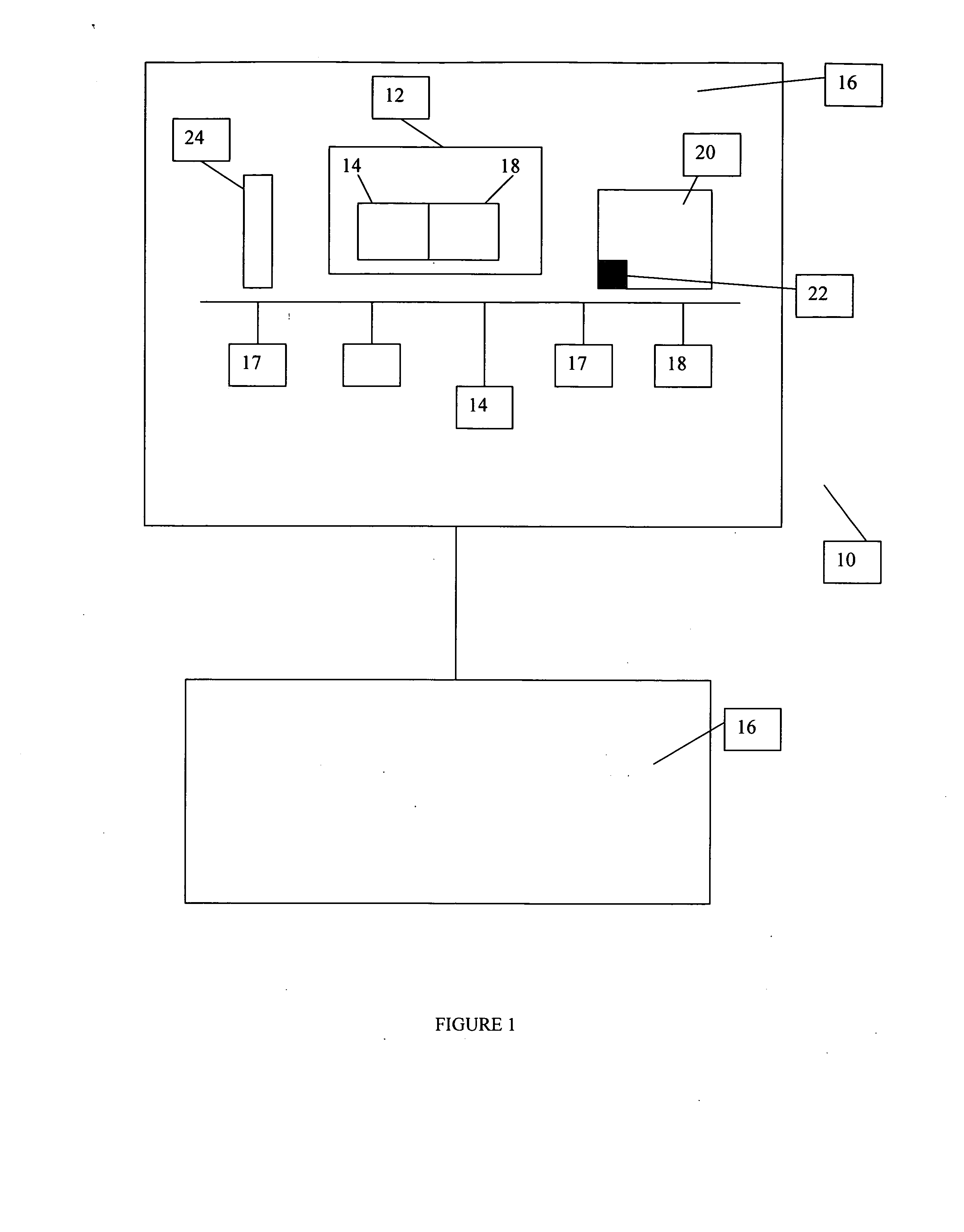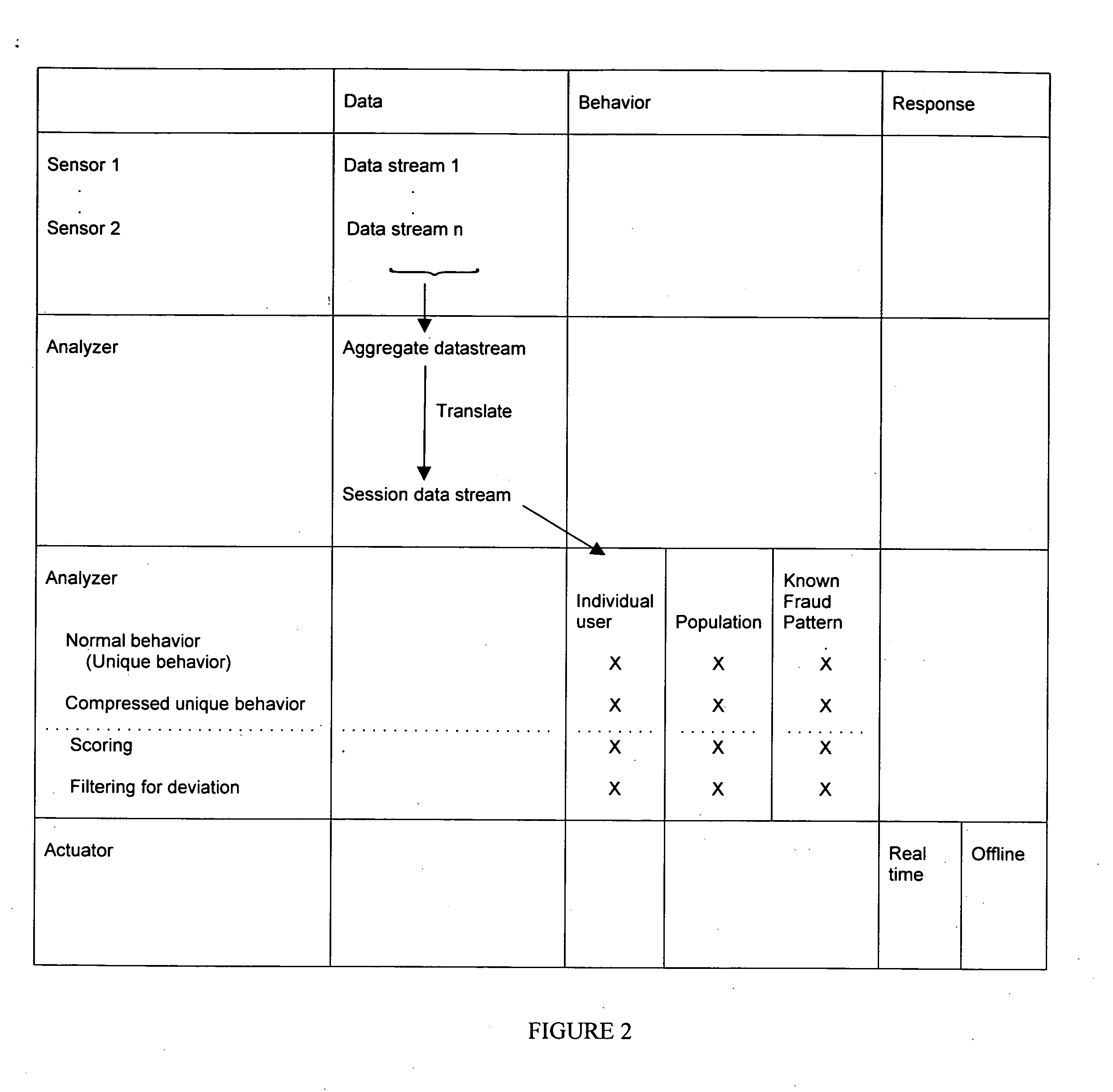System and method for conducting surveillance on a distributed network
a distributed network and surveillance technology, applied in the direction of unauthorized memory use protection, instruments, error detection/correction, etc., can solve the problems of network intrusion, electronic fraud, and individual exchanging information on these networks as potential victims of achieve the effect of avoiding network intrusion and electronic fraud, avoiding fraudulent use, and avoiding network intrusion
- Summary
- Abstract
- Description
- Claims
- Application Information
AI Technical Summary
Benefits of technology
Problems solved by technology
Method used
Image
Examples
example 1
[0058] Assume there are 15 descriptors that can be used to identify an individual's behavior. The system 10 looks at historical data of the individual to identity these 15 descriptors. In this 15-dimensional space, the system 10 can identify three classes of deviations. The first is due to changes with respect to the individual's normal behavior while the second is with respect to the population's (or, the closest segment of the population's) normal behavior. The third behavior change is with respect to known types of fraudulent behavior. Taken together, it becomes possible to identify deviations in the individual's behavior and identify previously unknown fraud behaviors. For example, take the simple example case of deviations from the individual's normal behavior and deviations from known fraudulent behaviors. A 2×2 matrix can be constructed as shown in Table 1.
TABLE 1HiLoHiPotentially newExisting fraud patternDeviation fromfraud patternIndividual NormalbehaviorLoBehavior consis...
example 2
[0065] A consumer establishes a checking account at a physical branch and shortly thereafter bounces several checks in a row. The consumer then uses the account number assigned when the account was opened and the PIN number assigned to his ATM card to sign up for online banking services at the bank. While the DDA history systems would contain information about the series of bounced checks, the online banking applications may have no knowledge of physical transaction history. The individual then uses the online banking applications to request an overdraft line, and then transfers money from the overdraft line to his checking account. The individual then uses his ATM card to withdraw all of the money now in the checking account.
[0066] Typically the online banking applications would have no knowledge of deposits and withdrawals made via an ATM network. In one embodiment of this system, the three channels (ATM network, DDA transaction history, and online banking) are aggregated. With d...
example 3
[0072] In this example, a teacher uses a credit union to conduct his financial business. Given the teacher's income, the transaction amounts relative to the credit union are in the $ 100's to the 1000's. Should the system 10 notice a $10,000 transaction via the transaction network 16, the system 10 responds by creating a flag to the credit union for immediate intervention. In contrast, consider a family trust with a $100 million dollar value that regularly conducts stock transactions in the ten's of thousands of dollars. The same business event for a $10,000 transaction, being the norm for the family trust, does not trigger a flag. However, multiple transactions of $100s conducted within a short period of time (i.e., intraday) on the teacher's account, may trigger a flag, and prompt an intervention by the system 10. FIG. 3 is a flowchart that illustrates the creation / identification of business event definitions.
[0073] In another embodiment, the filter 22 is a contextual, probabilis...
PUM
 Login to View More
Login to View More Abstract
Description
Claims
Application Information
 Login to View More
Login to View More - R&D
- Intellectual Property
- Life Sciences
- Materials
- Tech Scout
- Unparalleled Data Quality
- Higher Quality Content
- 60% Fewer Hallucinations
Browse by: Latest US Patents, China's latest patents, Technical Efficacy Thesaurus, Application Domain, Technology Topic, Popular Technical Reports.
© 2025 PatSnap. All rights reserved.Legal|Privacy policy|Modern Slavery Act Transparency Statement|Sitemap|About US| Contact US: help@patsnap.com



